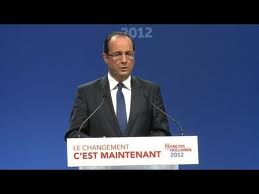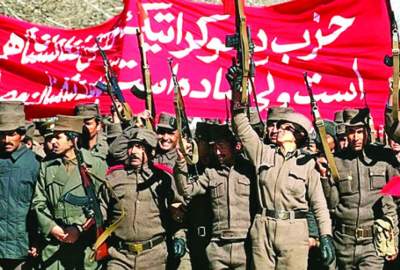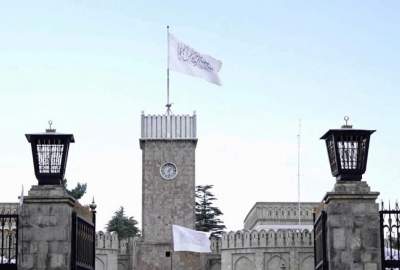Sworn in Tuesday as president of France, Francois Hollande has already been forced by the unforgiving calculus of military logistics to backtrack on his campaign promise to pull all French forces out of Afghanistan by the end of this year.
The pledge was one of the few foreign policy proposals put forth in Hollande’s campaign to unseat Nicolas Sarkozy, which centered mostly on economic and other French internal affairs. It marked a one-year acceleration of Sarkozy’s schedule, which was already a year ahead of NATO’s carefully negotiated timetable calling for a staged pullout through 2014.
As such, Hollande’s promise represented a clear-cut difference with the Obama administration. Given the Afghanistan war’s unpopularity in Europe, specialists warned, it also carried the danger of encouraging other nations to follow suit at a NATO summit conference May 20-21 in Chicago.
A number of governments in the 40-nation Afghan coalition, faced with growing opposition to a war that does not seem to have a clear end in sight, already have signaled that they want to speed up withdrawals, according to Francois Heisbourg, a veteran military specialist at the Foundation for Strategic Research in Paris. The schedule was decided in November 2010 at a NATO summit in Lisbon.
The new French timetable is likely to be a subject of discussion when Hollande meets President Obama for the first time at breakfast Friday morning at the White House, Hollande’s aides have said. The two leaders — and others in the coalition who are looking for an exit — also will have an opportunity to exchange views on Afghanistan and other issues at the Group of Eight summit at Camp David on Friday and Saturday and then at the NATO gathering Sunday and Monday.
Hollande, who has little foreign policy experience, initially pledged to withdraw by year’s end all the 3,400 French military personnel deployed in Afghanistan and nearby countries in support of NATO’s International Security Assistance Force. But he refined that later to say he would pull out only combatants.
The definition and number of combatants still have to be worked out by the new president and his advisers, said the Defense Ministry spokesman, Col. Thierry Burkhard. Soldiers acting as trainers or carrying out other duties can be assigned to combat at any time, he explained, making the category hard to define with precision .
In any case, the pullout of combatants would leave in place hundreds of military trainers. They, along with 150 French paramilitary gendarmes, are assigned to prepare the Afghan military to take over security responsibilities.
The French trainers have trimmed their mission since Afghan trainees started shooting their mentors, but they are still a key part of NATO’s training program. It was the assassination of four French trainers by an Afghan recruit on Jan. 20 that led Sarkozy to decide on an early pullout.
Sarkozy said then he would also propose that NATO consider accelerating the timetable for everybody. Although he consulted the Obama administration before his announcement, the suggestion was regarded in Washington as an unwelcome complication of an already delicate problem.
Since Hollande’s initial campaign promise, military specialists have pointed out that it would be next to impossible to transport all combat troops and their equipment back to France by the end of the year. Leaving behind the equipment to be guarded by U.S. or other NATO forces also would be an undesirable solution, they said.
The deployment, according to the Defense Ministry, includes up to 900 vehicles, more than half of them tanks and armored personnel carriers. Fourteen helicopters, based at the Kabul airport, have been deployed to transport and protect French soldiers. Several Mirage 2000 warplanes also have been dispatched to provide air reconnaissance, along with a K-135 refueling plane that is based in the Persian Gulf.
The French military could bring back the troops but would have trouble hauling back all their equipment because it is short on heavy-lift aircraft. Burkhard said the French military usually has to rent C-5A Galaxy, C-141 Starlifter or C-17A Globemaster transport planes from the United States for a trip to or from a Persian Gulf airport, from where the equipment moves by sea.
Leaving the equipment in Afghanistan, particularly armored personnel carriers and self-propelled artillery, is an unpalatable solution because much of it is top-of-the-line, new or recently retrofitted with modern electronics, and is needed to keep the French military well equipped, Heisbourg pointed out.
“If it’s just a question of getting the boys out, that’s no problem,” he said. “Hollande can say with a straight face that he carried out his pledge. But we also want to bring back their stuff, and it’s going to take a long time.”
The pledge was one of the few foreign policy proposals put forth in Hollande’s campaign to unseat Nicolas Sarkozy, which centered mostly on economic and other French internal affairs. It marked a one-year acceleration of Sarkozy’s schedule, which was already a year ahead of NATO’s carefully negotiated timetable calling for a staged pullout through 2014.
As such, Hollande’s promise represented a clear-cut difference with the Obama administration. Given the Afghanistan war’s unpopularity in Europe, specialists warned, it also carried the danger of encouraging other nations to follow suit at a NATO summit conference May 20-21 in Chicago.
A number of governments in the 40-nation Afghan coalition, faced with growing opposition to a war that does not seem to have a clear end in sight, already have signaled that they want to speed up withdrawals, according to Francois Heisbourg, a veteran military specialist at the Foundation for Strategic Research in Paris. The schedule was decided in November 2010 at a NATO summit in Lisbon.
The new French timetable is likely to be a subject of discussion when Hollande meets President Obama for the first time at breakfast Friday morning at the White House, Hollande’s aides have said. The two leaders — and others in the coalition who are looking for an exit — also will have an opportunity to exchange views on Afghanistan and other issues at the Group of Eight summit at Camp David on Friday and Saturday and then at the NATO gathering Sunday and Monday.
Hollande, who has little foreign policy experience, initially pledged to withdraw by year’s end all the 3,400 French military personnel deployed in Afghanistan and nearby countries in support of NATO’s International Security Assistance Force. But he refined that later to say he would pull out only combatants.
The definition and number of combatants still have to be worked out by the new president and his advisers, said the Defense Ministry spokesman, Col. Thierry Burkhard. Soldiers acting as trainers or carrying out other duties can be assigned to combat at any time, he explained, making the category hard to define with precision .
In any case, the pullout of combatants would leave in place hundreds of military trainers. They, along with 150 French paramilitary gendarmes, are assigned to prepare the Afghan military to take over security responsibilities.
The French trainers have trimmed their mission since Afghan trainees started shooting their mentors, but they are still a key part of NATO’s training program. It was the assassination of four French trainers by an Afghan recruit on Jan. 20 that led Sarkozy to decide on an early pullout.
Sarkozy said then he would also propose that NATO consider accelerating the timetable for everybody. Although he consulted the Obama administration before his announcement, the suggestion was regarded in Washington as an unwelcome complication of an already delicate problem.
Since Hollande’s initial campaign promise, military specialists have pointed out that it would be next to impossible to transport all combat troops and their equipment back to France by the end of the year. Leaving behind the equipment to be guarded by U.S. or other NATO forces also would be an undesirable solution, they said.
The deployment, according to the Defense Ministry, includes up to 900 vehicles, more than half of them tanks and armored personnel carriers. Fourteen helicopters, based at the Kabul airport, have been deployed to transport and protect French soldiers. Several Mirage 2000 warplanes also have been dispatched to provide air reconnaissance, along with a K-135 refueling plane that is based in the Persian Gulf.
The French military could bring back the troops but would have trouble hauling back all their equipment because it is short on heavy-lift aircraft. Burkhard said the French military usually has to rent C-5A Galaxy, C-141 Starlifter or C-17A Globemaster transport planes from the United States for a trip to or from a Persian Gulf airport, from where the equipment moves by sea.
Leaving the equipment in Afghanistan, particularly armored personnel carriers and self-propelled artillery, is an unpalatable solution because much of it is top-of-the-line, new or recently retrofitted with modern electronics, and is needed to keep the French military well equipped, Heisbourg pointed out.
“If it’s just a question of getting the boys out, that’s no problem,” he said. “Hollande can say with a straight face that he carried out his pledge. But we also want to bring back their stuff, and it’s going to take a long time.”
Source : Afghan Voice Agency (AVA), International Service












